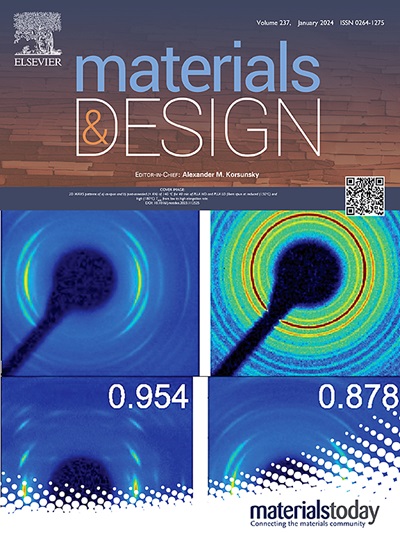Data-driven electrochemical behavior prediction for refractory high-entropy alloys by global and focused learning
IF 7.9
2区 材料科学
Q1 MATERIALS SCIENCE, MULTIDISCIPLINARY
引用次数: 0
Abstract
Curve data are essential tools in materials science for characterizing material properties. However, obtaining and analyzing these curve data such as electrochemical corrosion curves to establish the intrinsic relationship of the material is time-consuming work. While machine learning (ML) method can dramatically accelerate material research and development, accurately predicting electrochemical curves to understand the corrosion behavior of corrosion-resistant alloys remains a significant challenge, due to that macroscopic experiments and microscopic theoretical simulations have yet to be effectively integrated. In this work, we propose a data-driven method that integrates global and focused learning (GFL) strategies. Taking refractory high-entropy alloys (RHEAs) as a case study, we establish prediction models for their corrosion behavior based on potentiodynamic polarization curve data and interpretable GFL. Through compositional optimization, a series of RHEAs with high corrosion resistance, such as Ti20V10Nb20Mo20Ta30, have been obtained. This alloy exhibits excellent corrosion resistance compared with other RHEAs. In addition, compared with traditional single ML methods, GFL not only accurately predicted the polarization curves of RHEAs but also captures the key factors affecting the corrosion resistance of the alloys. The GFL strategy provides an effective ML tool with physical interpretation for material curve data analyzation.

基于全局集中学习的难熔高熵合金数据驱动电化学行为预测
曲线数据是材料科学中表征材料性能的重要工具。然而,获取和分析这些曲线数据,如电化学腐蚀曲线,以建立材料的内在关系是一项耗时的工作。虽然机器学习(ML)方法可以极大地加速材料的研究和开发,但由于宏观实验和微观理论模拟尚未有效整合,因此准确预测电化学曲线以了解耐腐蚀合金的腐蚀行为仍然是一个重大挑战。在这项工作中,我们提出了一种数据驱动的方法,该方法集成了全局和集中学习(GFL)策略。以难熔高熵合金(RHEAs)为例,建立了基于动电位极化曲线数据和可解释GFL的腐蚀行为预测模型。通过成分优化,获得了Ti20V10Nb20Mo20Ta30等一系列高耐蚀性的RHEAs。与其他RHEAs相比,该合金具有优异的耐腐蚀性。此外,与传统的单一ML方法相比,GFL不仅准确地预测了RHEAs的极化曲线,而且捕获了影响合金耐蚀性的关键因素。GFL策略为材料曲线数据分析提供了物理解释的有效ML工具。
本文章由计算机程序翻译,如有差异,请以英文原文为准。
求助全文
约1分钟内获得全文
求助全文
来源期刊

Materials & Design
Engineering-Mechanical Engineering
CiteScore
14.30
自引率
7.10%
发文量
1028
审稿时长
85 days
期刊介绍:
Materials and Design is a multi-disciplinary journal that publishes original research reports, review articles, and express communications. The journal focuses on studying the structure and properties of inorganic and organic materials, advancements in synthesis, processing, characterization, and testing, the design of materials and engineering systems, and their applications in technology. It aims to bring together various aspects of materials science, engineering, physics, and chemistry.
The journal explores themes ranging from materials to design and aims to reveal the connections between natural and artificial materials, as well as experiment and modeling. Manuscripts submitted to Materials and Design should contain elements of discovery and surprise, as they often contribute new insights into the architecture and function of matter.
 求助内容:
求助内容: 应助结果提醒方式:
应助结果提醒方式:


